- January 01, 2016
- How did the New York Times report election result in the early 1900s? It involved spotlights!
One of the fun aspects of TimesMachine is how easy it is to go back and see how the Times would report things in a different era. Since my speciality was election results, I looked for how the Times reported elections in the past. Little did I know what a journey it would be!
A Brief History of One Times Square
In 1896, Adolph Ochs bought the Times and presided over its expansion. In 1905, he moved the newspaper to a new headquarters located at One Times Square, where it remained for only eight years before moving operations to another building down the street (but still keeping a presence at this building). You may know this building best as the place where they drop the ball on New Year’s Eve, and for that reason it’s also thoroughly encased in advertising today. It’s always had a prime location at the southern edge of Times Square. This made it ideal for the Times to use for its own promotional events, and elections became one of the biggest parties around.
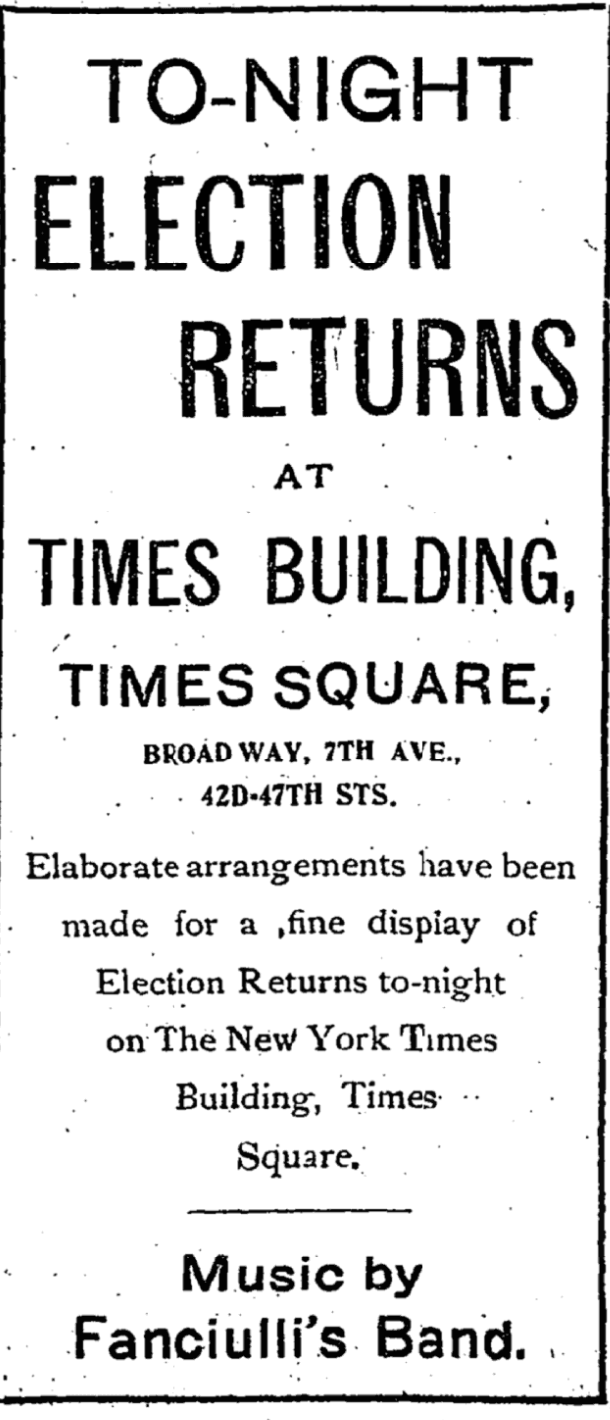
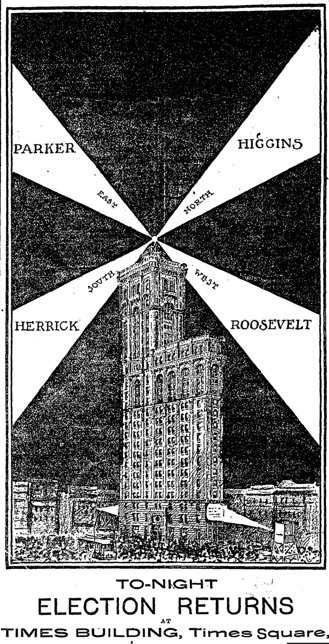
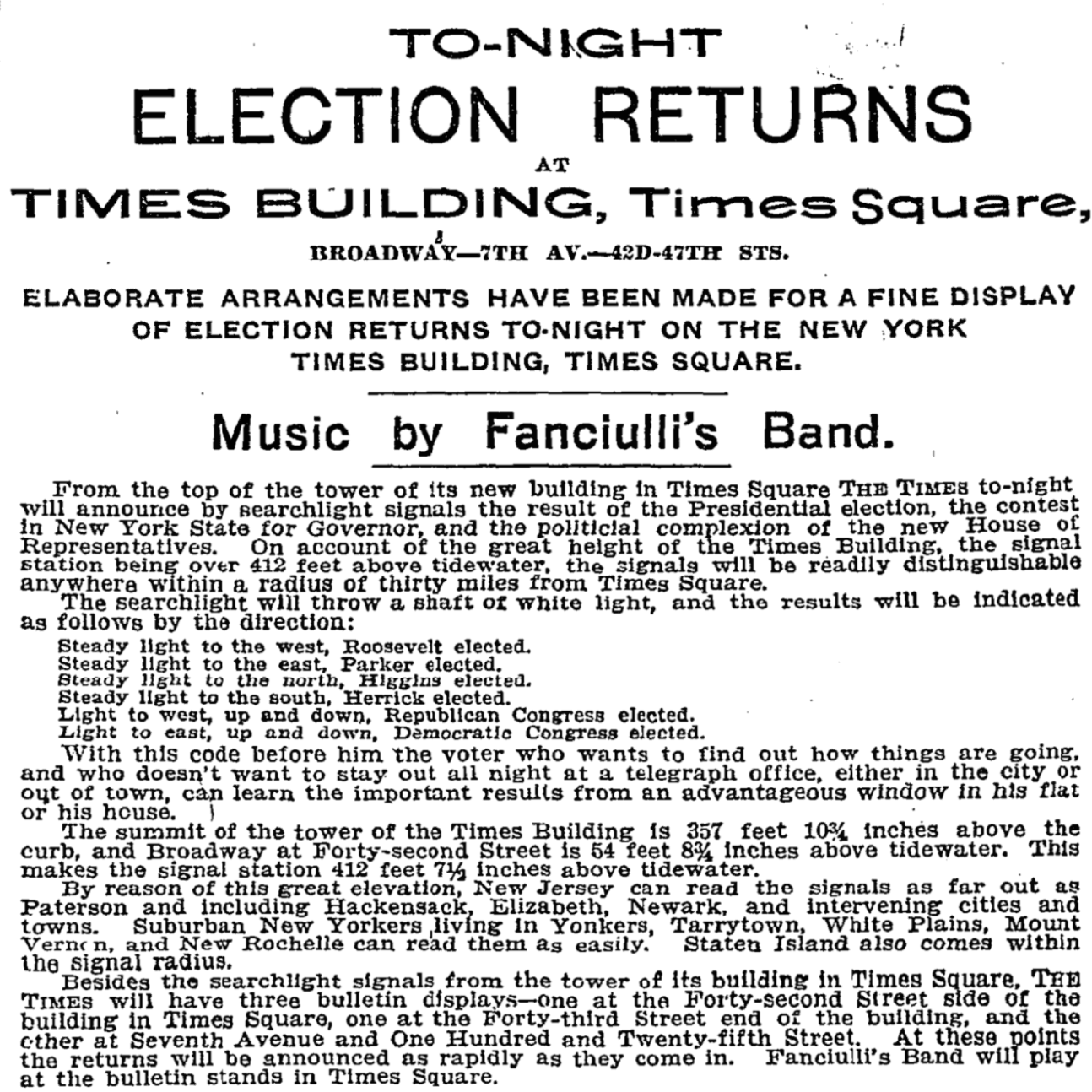
It’s dwarfed by its neighbors now, but as the middle picture makes clear, the Times tower was the tallest building in its immediate region and this led to a truly wild mechanism for reporting election results: beaming a spotlight in a different direction depending on who won the race. As the advertisemnt puts it
From the top of the tower of its new bullding in Times Square THE TIMEs to-night will announce by searchlight signals the result of the Presidential election, the contest in New York State for Governor, and the political complexion of the new House of Representatives. On account of the great height of the Times Building, the signal station being over 412 feet above tidewater, the signals will be readily distinguishable anywhere within a radius of thirty miles from Times Square The searchlight will throw a shaft of white light, and the results will be indicated as follows by the direction:
- Steady light to the west, Roosevelt elected
- Steady light to the east, Parker elected
- Steady light to the north, Higgins elected
- Steady light to the south, Herrick elected
- Light to the west, up and down, Republican Congress elected.
- Light the east, up and down, Democratic Congress elected.
With the code before him, the voter who wants to find out how things are going and who doesn’t want to stay out all night at a telegraph office, either in the city or out of town can learn the results from an advantageous window in his flat or his house.
Remember, this was the time before television and even radio. The only option for live results was to go hang out at a telegraph office, or see what was posted by a newspaper on signs outside. And it was apparently a hit, because the Times repeated it every election (both presidential and several city elections) for decades with even more elaborate codes. What finally stopped it was the advent of World War 2 and restrictions on lighting.
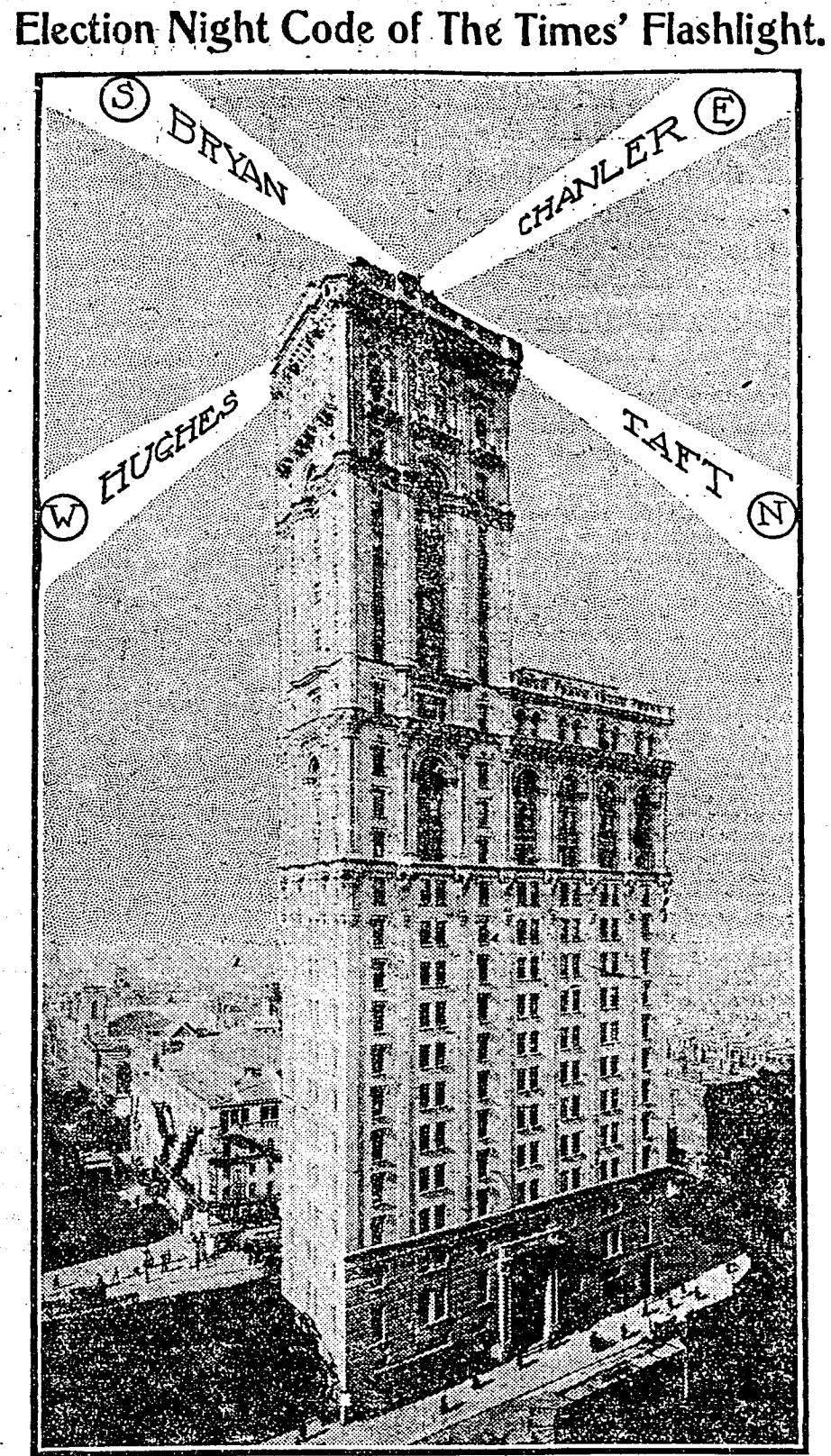
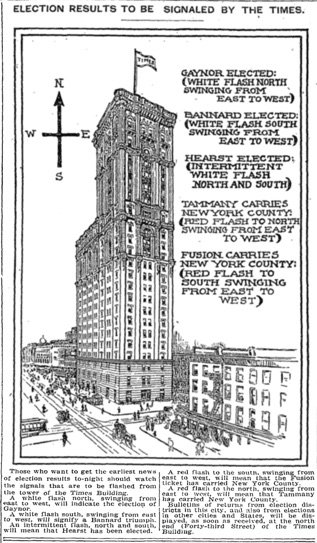
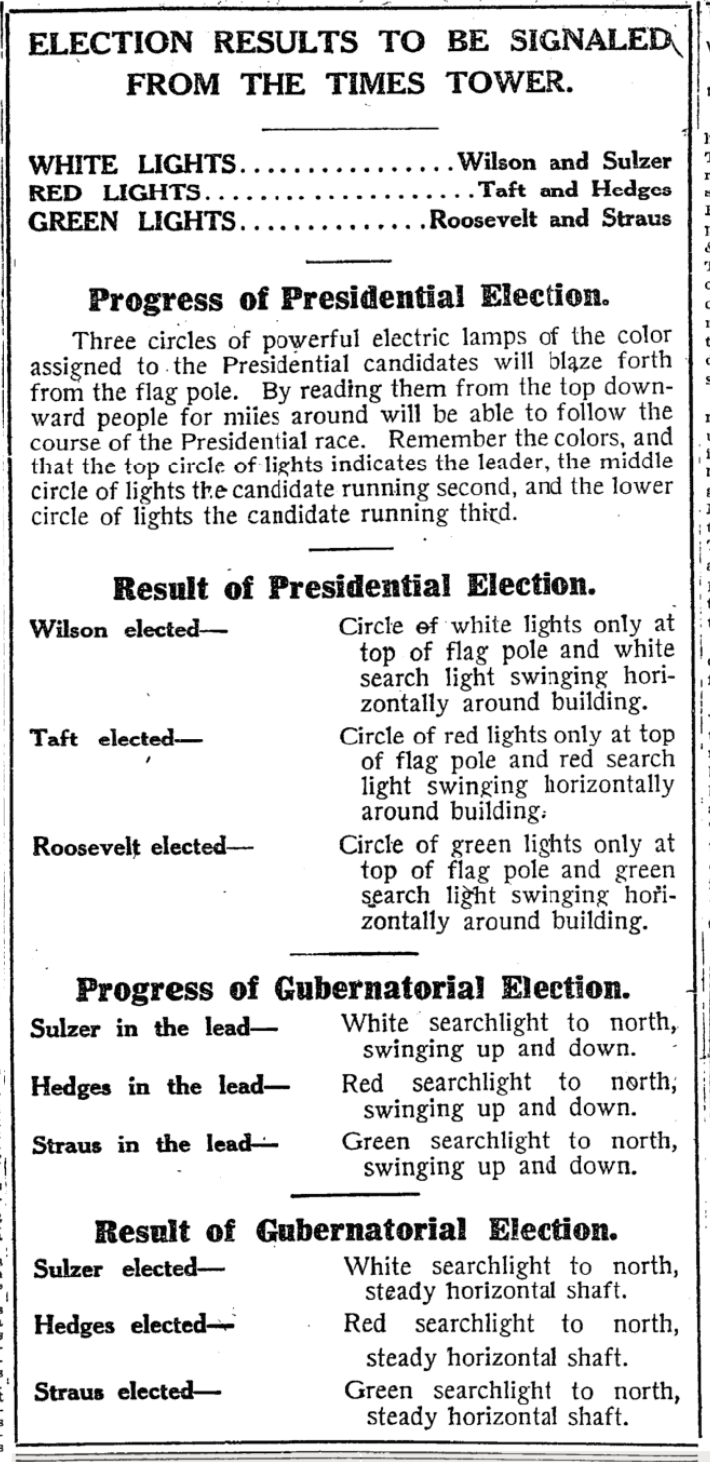
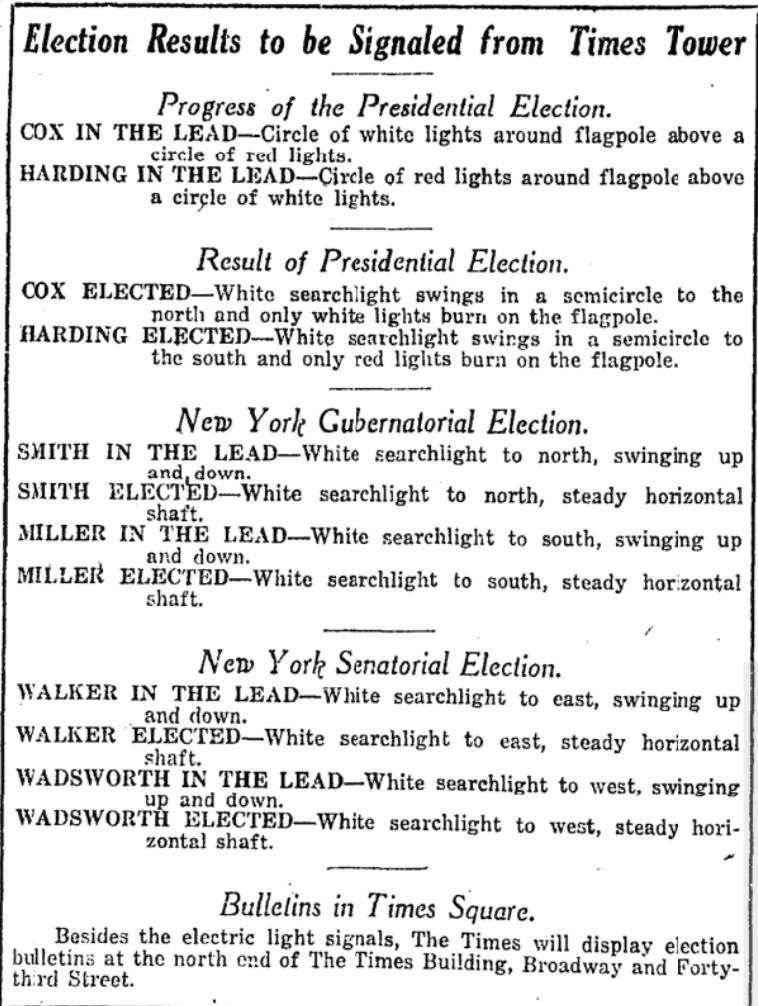
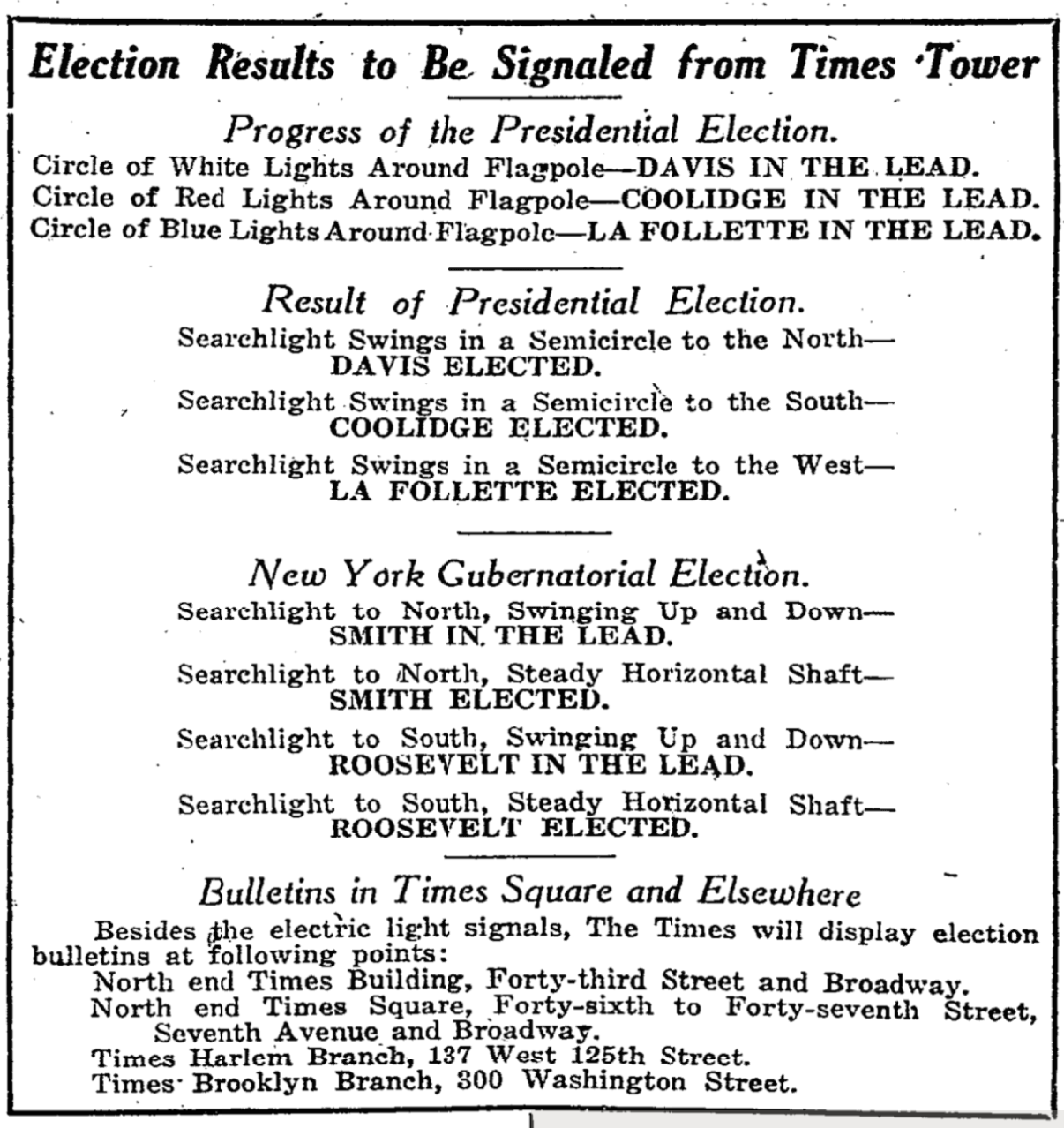
In 1928, they added another new feature, a moving news reel made of 14,800 bulbs that moved around the building. We are familiar with these as LED displays, but this was the earliest form of the technology and a veritable marvel.
The Election Night Parties
All these spectacles attracted an ever increasing crowd of people there for the party. A 1914 article estimated the crowd in attendance at 100,000. In 1944, there were 1150 police in Times Square to keep the peace in expectation of record crowds which was estimated at 250,000 total. But in 1952, it had all fallen apart, with less than 25,000 maximum in attendance. What killed it? The rise of radio and then television election coverage is what ultimately put it in. As the report from election night in 1952 put it:
A last burst of shouting echoed in the square at 12:40 A.M. today when the line of lights on the east side of the new election board suddenly streaked to the top, to show that General Eisenhower had more than 266 electoral votes, and had won in a sweep.
At the same moment the line of lights on Governor Stevenson’s side of the board, which had not moved for hours, symbolically went out. The moving letters in the running sign that girdles the Tower broke out with “Eisenhower Elected,” with the news bracketed between golden stars.
Then the searchlight high in the Tower, which had been brooming the starless sky to the north all night, to show Eisenhower in the lead, held steady to show that he had won. The crowd cheered again, and slowly came apart to drift toward the subways.
A tradition was dead, with only a few thousand pallbearers to see it peacefully interred.